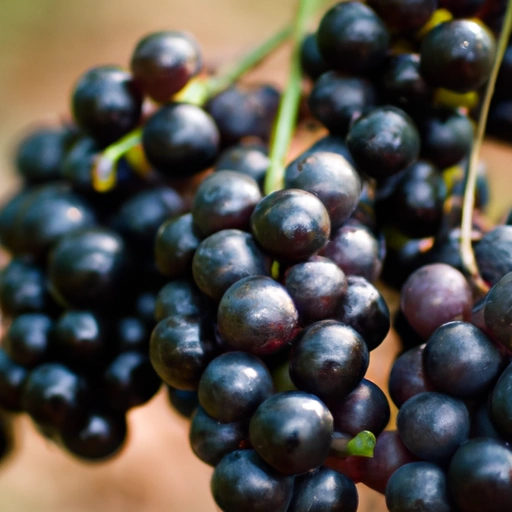Muscadine Grape
Description

The Muscadine grape is a grape variety native to the southeastern United States. Known for its thick skin and distinctively fruity flavor, it is larger than most other types of grapes and comes in shades ranging from green to dark purple. Muscadine grapes are often used in food and wine recipes, known not just for their taste but also for their health benefits.
Common uses
Muscadine grapes are commonly used in the production of jams, jellies, juices, and wines. They can also be consumed fresh, offering a burst of juicy sweetness that is often enjoyed as a snack or dessert. Their robust flavor makes them a popular choice for various culinary applications.
Nutritional value
Calories
A 100-gram serving of muscadine grapes contains approximately 57 calories (238 kJ).
Protein
This serving size provides about 0.8 grams of protein.
Fat
Muscadine grapes are low in fat, containing less than 0.5 grams per 100-gram serving.
Carbohydrates
The carbohydrate content is around 14 grams per 100-gram serving, with a significant portion of that being natural sugars.
Vitamins
These grapes are a good source of Vitamin C, providing about 6.5 milligrams per 100-gram serving. They also contain Vitamin A and several B vitamins in smaller amounts.
Minerals
Muscadine grapes contain beneficial minerals such as potassium, with around 203 milligrams per 100-gram serving, as well as calcium and magnesium.
Health benefits
Muscadine grapes are rich in antioxidants and have anti-inflammatory properties. They are well-regarded for their high resveratrol content, which has been linked to heart health and longevity. Regular consumption can contribute to a healthy diet and may help reduce the risk of chronic diseases such as heart disease and certain types of cancer.
Potential risks
While muscadine grapes are generally considered safe for most individuals, those with grape allergies should avoid them. Additionally, as with any fruit, overconsumption can lead to gastrointestinal discomfort due to their fiber content. The high sugar content might not be suitable for individuals managing their blood sugar levels.
Common recipes
Muscadine grapes are famously used in homemade wines and muscadine pie. They are also excellent in fruit salads, compotes, and tarts.
Cooking methods
These grapes can be enjoyed fresh or cooked. When heated, they can release their pectin, making them ideal for thickening jams and jellies.
Pairing with other ingredients
They pair well with flavors like citrus, ginger, and honey. In savory dishes, muscadine grapes complement poultry and game meats, especially when used in sauces or glazes.
Summary
Muscadine grapes are a distinct and flavorful variety well-suited to a range of dishes. Their rich history and health benefits make them a valuable addition to any kitchen, whether you're in the American South or anywhere else in the world. Their versatility in both sweet and savory applications, combined with a robust nutritional profile, ensures that muscadine grapes hold a cherished place in culinary traditions.